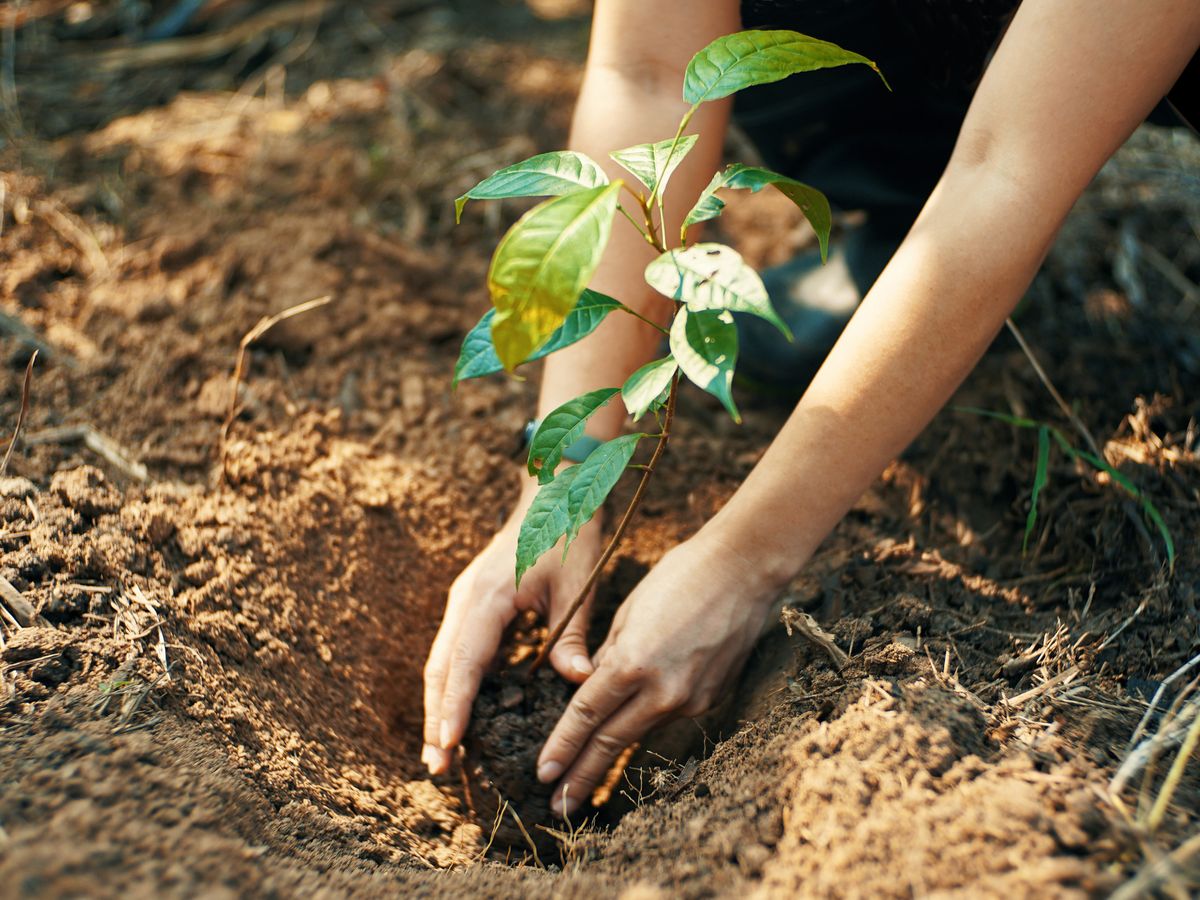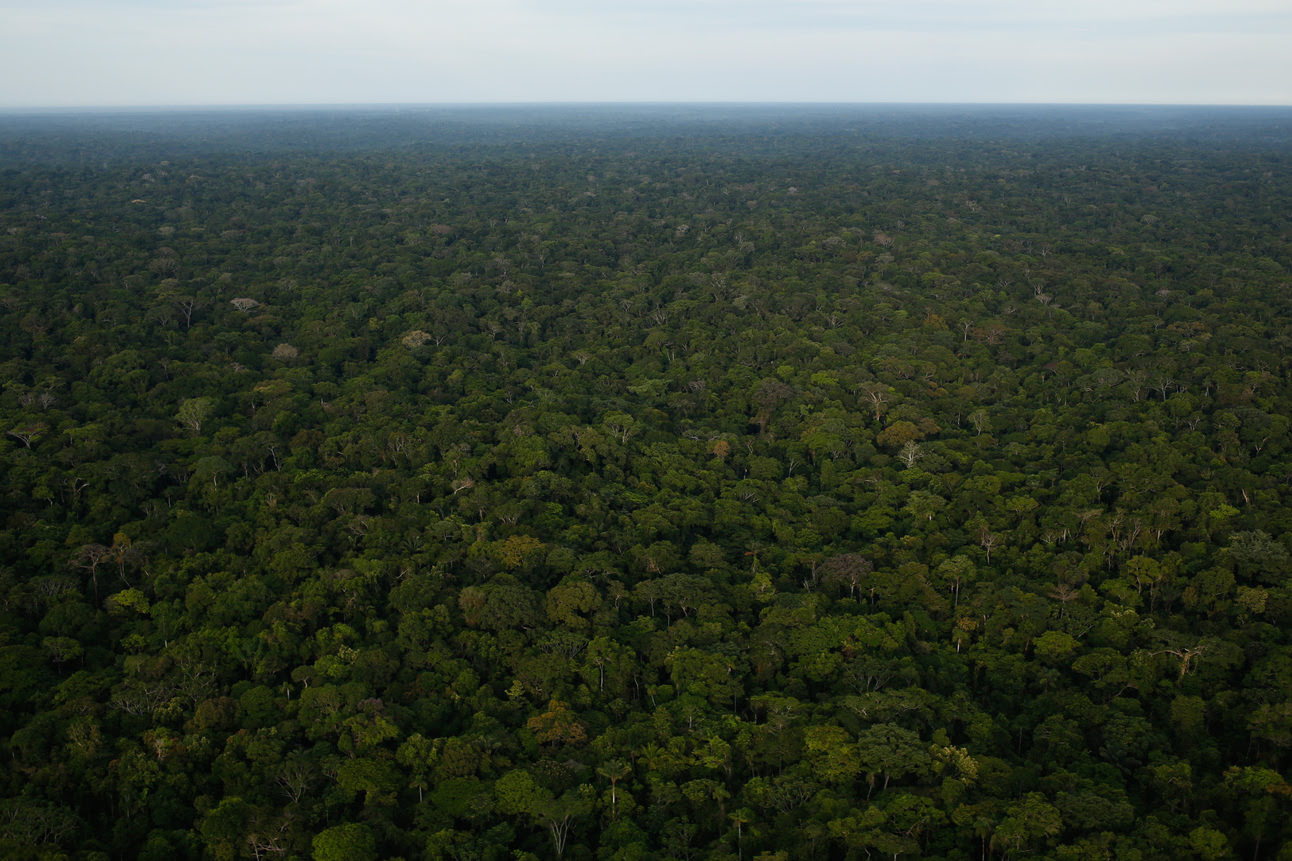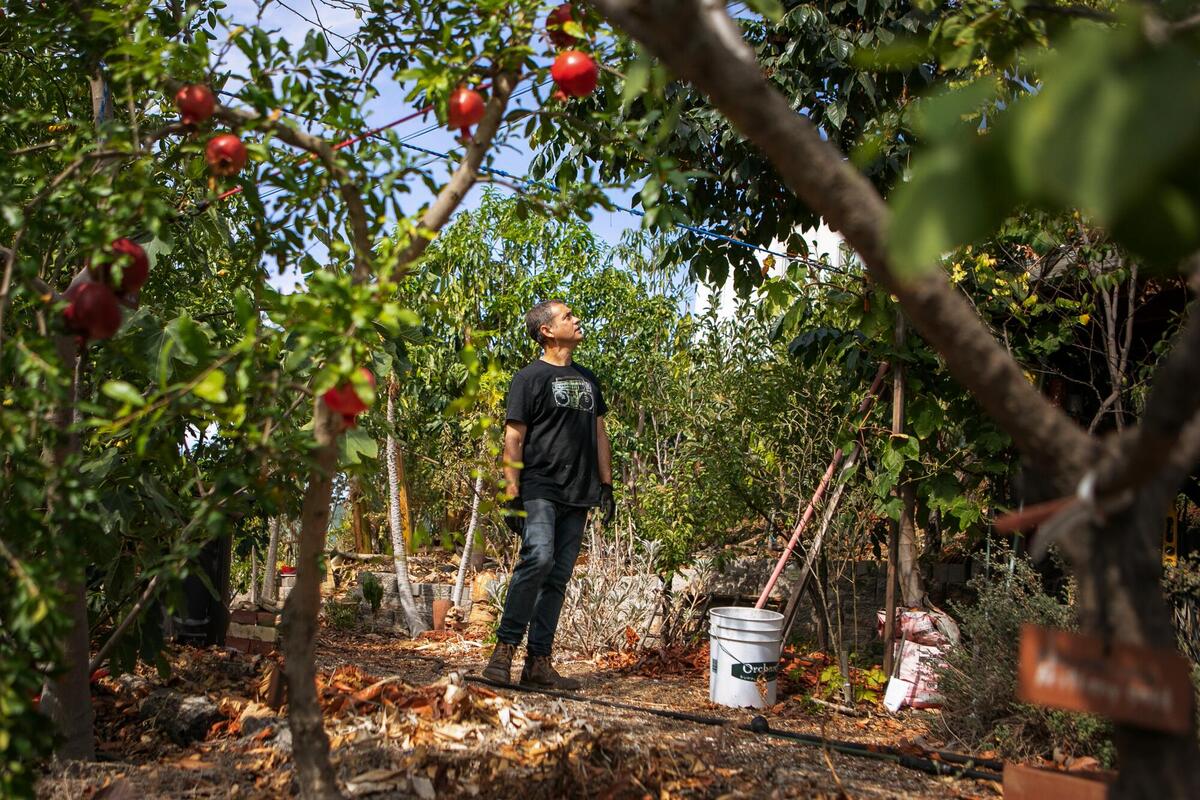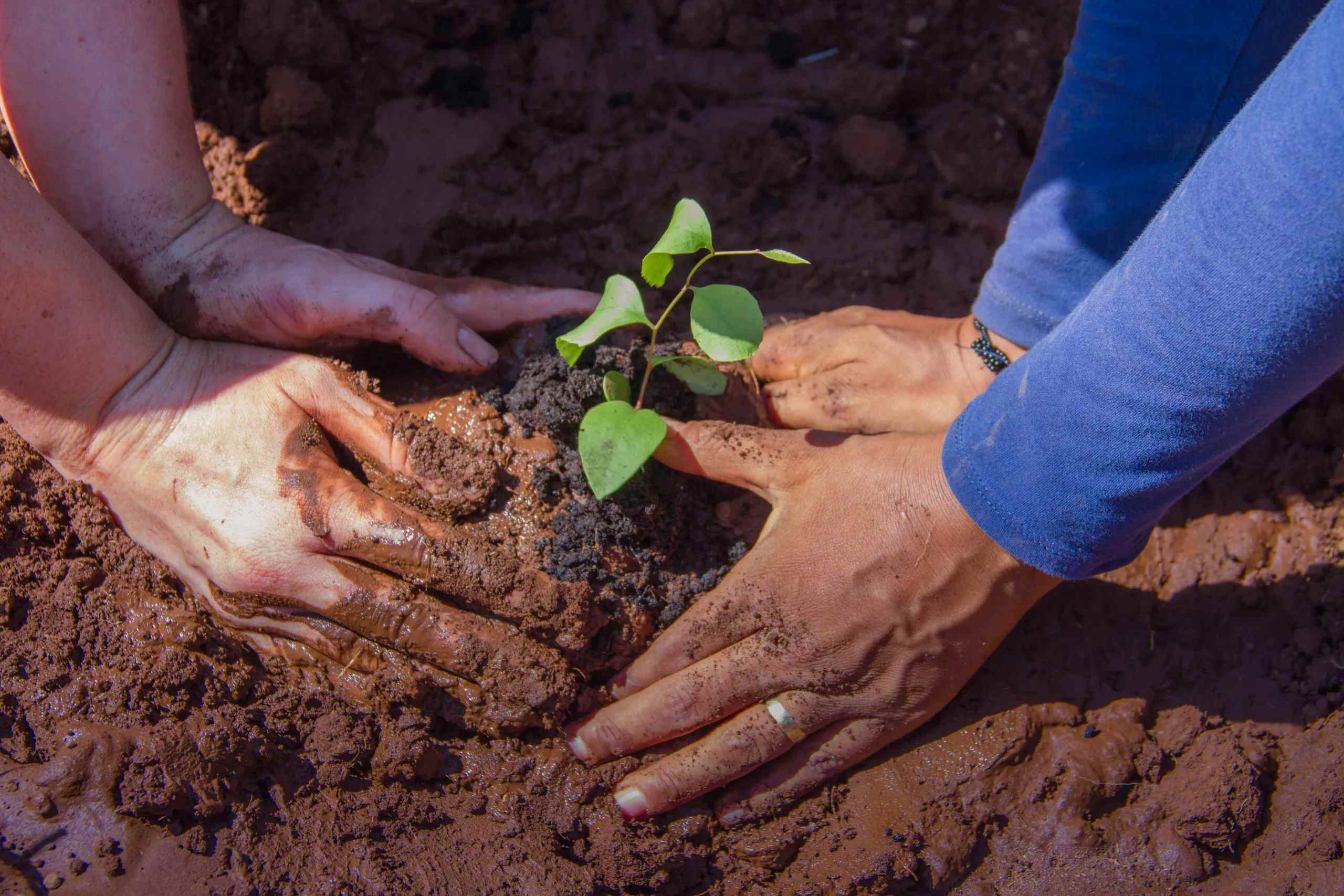Home>Gardening News and Trends>Latest News>How Many Trees Are Planted Each Day


Latest News
How Many Trees Are Planted Each Day
Modified: January 22, 2024
Discover the latest news on how many trees are planted each day. Stay updated with the latest trends and initiatives in reforestation efforts around the world.
(Many of the links in this article redirect to a specific reviewed product. Your purchase of these products through affiliate links helps to generate commission for Chicagolandgardening.com, at no extra cost. Learn more)
Table of Contents
- Introduction
- Factors influencing tree planting efforts
- Tree planting initiatives by government organizations
- Tree planting initiatives by non-governmental organizations
- Tree planting efforts by individuals and communities
- Impact of tree planting on the environment
- Challenges faced in tree planting efforts
- Future projections for tree planting initiatives
- Conclusion
Introduction
Tree planting plays a crucial role in combating climate change, improving air quality, and providing habitat for wildlife. It is an essential component of global efforts to restore and preserve the environment. But have you ever wondered how many trees are planted each day? In this article, we will explore the various factors influencing tree planting efforts and examine initiatives by government organizations, non-governmental organizations, as well as the contributions of individuals and communities.
With the escalating concerns about deforestation and the urgent need to mitigate the effects of climate change, tree planting has gained significant attention in recent years. Trees act as natural carbon sinks, absorbing carbon dioxide from the atmosphere and releasing oxygen. They also provide shade, conserve water, prevent soil erosion, and enhance biodiversity. Therefore, it is important to understand the scale of tree planting initiatives worldwide in order to assess their impact on the environment.
The number of trees planted each day is influenced by several factors. Government organizations play a crucial role in setting policies and creating frameworks that promote tree planting initiatives. Non-governmental organizations (NGOs) also contribute significantly to tree planting efforts through their campaigns and projects. Additionally, individuals and communities play a vital role in tree planting, often organizing community tree-planting events or contributing to reforestation programs.
In the following sections, we will delve into the specific initiatives taken by different entities to promote tree planting. We will explore the impact of these efforts on the environment and the challenges faced along the way. Finally, we will assess the future outlook of tree planting initiatives and their significance in combating climate change and preserving our planet.
Factors influencing tree planting efforts
The number of trees planted each day is influenced by a multitude of factors. These factors play a significant role in shaping tree planting efforts worldwide. Understanding these factors is crucial for effective planning and implementation of tree planting initiatives. Let’s explore some of the key factors influencing tree planting efforts:
- Government policies and regulations: Government organizations play a crucial role in promoting and regulating tree planting initiatives. Policies such as afforestation programs, sustainable forest management, and carbon offset schemes provide incentives and guidelines for individuals, communities, and organizations to engage in tree planting activities. Financial support, tax benefits, and land-use regulations also influence the scale and success of tree planting efforts.
- Environmental awareness and education: Increasing awareness about the importance of trees and the environmental benefits they provide is a key factor in driving tree planting efforts. Educational campaigns, environmental conservation programs, and public awareness initiatives help to raise consciousness about the significance of tree planting for climate change mitigation, biodiversity conservation, and ecological restoration. By educating the public, individuals are motivated to take action and actively participate in tree planting initiatives.
- Collaboration and partnerships: Collaboration between various stakeholders such as government agencies, NGOs, businesses, and local communities is essential for successful tree planting efforts. Partnerships between these entities enable the pooling of resources, knowledge, and expertise, leading to more comprehensive and impactful tree planting initiatives. Collaborative efforts help to address challenges, share best practices, and maximize the effectiveness of tree planting campaigns.
- Availability of resources: The availability of resources such as land, funding, seedlings, and technical expertise is a critical factor in determining the number of trees planted each day. Government support, grants, donations, and volunteer efforts significantly contribute to the availability of these resources. Accessibility to nurseries, tree seedling suppliers, and planting equipment also plays a role in facilitating tree planting initiatives.
- Local community involvement: The engagement and participation of local communities are vital for the success of tree planting efforts. When communities are involved in decision-making processes, they develop a sense of ownership and pride in the trees they plant. Involving local communities fosters long-term commitment and ensures the sustainability of tree planting initiatives. Additionally, community-based tree planting events and projects serve as effective platforms to raise awareness, build relationships, and motivate others to join the cause.
These factors, among others, directly impact the number of trees planted each day. By addressing these factors and leveraging opportunities for collaboration and resource mobilization, tree planting efforts can be accelerated and scaled up to make a meaningful and lasting impact on our planet’s health and sustainability.
Tree planting initiatives by government organizations
Government organizations play a crucial role in promoting and implementing tree planting initiatives. They have the authority and resources to create policies, allocate funding, and establish frameworks that encourage tree planting at a large scale. Let’s explore some notable tree planting initiatives undertaken by government organizations:
- Reforestation programs: Governments around the world have launched reforestation programs to restore and expand forested areas. These programs involve planting trees in areas that have been deforested due to agriculture, logging, or natural disasters. Reforestation efforts aim to combat climate change, preserve biodiversity, and enhance ecosystem services such as water regulation and soil stabilization.
- Afforestation campaigns: Many governments have launched afforestation campaigns to increase the overall forest cover in their countries. These campaigns involve planting trees in areas where forests did not previously exist. Afforestation not only helps mitigate climate change by absorbing carbon dioxide, but also brings numerous environmental benefits such as erosion control, habitat creation, and improvement of air and water quality.
- Urban greening initiatives: Governments are increasingly recognizing the importance of urban green spaces for the well-being of their citizens. Urban greening initiatives involve planting trees and creating green spaces in cities and towns. These efforts improve air quality, reduce urban heat island effect, provide shade, and enhance the beauty and liveability of urban areas.
- Carbon offset programs: In the pursuit of reducing greenhouse gas emissions, some governments have implemented carbon offset programs. These programs encourage businesses and individuals to offset their carbon footprint by funding tree planting projects. By investing in tree planting initiatives, governments aim to achieve a balance between carbon emissions and carbon sequestration, thereby contributing to global climate change mitigation efforts.
- Community forestry programs: Governments have also implemented community forestry programs that empower local communities to participate in tree planting and forest management activities. These programs involve granting land rights to communities, promoting sustainable forest management practices, and supporting income-generating activities related to tree planting and forest products. Community forestry programs not only contribute to environmental conservation, but also provide socio-economic benefits to local communities.
These government-initiated tree planting programs and campaigns are driven by the recognition of the critical role forests play in mitigating climate change, conserving biodiversity, and providing essential ecosystem services. Through these initiatives, governments are setting the stage for widespread tree planting efforts and fostering a culture of environmental stewardship. However, the success of these initiatives relies not only on governmental commitment, but also on collaboration with non-governmental organizations, businesses, and individuals to ensure long-term sustainability and effectiveness.
Tree planting initiatives by non-governmental organizations
Non-governmental organizations (NGOs) play a vital role in advocating for and implementing tree planting initiatives. These organizations often have a focused mission to address environmental issues and actively engage in tree planting projects. Let’s explore some of the notable tree planting initiatives undertaken by NGOs:
- Global reforestation campaigns: NGOs launch global reforestation campaigns to tackle deforestation and restore degraded ecosystems. These campaigns aim to raise awareness, mobilize resources, and coordinate tree planting efforts on a large scale. NGOs collaborate with local communities, businesses, and other stakeholders to plant millions of trees in deforested areas all over the world.
- Agroforestry projects: Agroforestry is a sustainable land-use system that combines trees with agricultural crops or livestock. NGOs implement agroforestry projects to provide communities with food security, income generation, and environmental benefits. These projects involve planting trees that provide shade, improve soil fertility, and offer additional sources of income through the sustainable harvest of timber, fruits, nuts, or medicinal plants.
- Urban tree planting initiatives: NGOs understand the importance of greening urban areas and improving the quality of life for city dwellers. They undertake urban tree planting initiatives to combat the urban heat island effect, reduce air pollution, and enhance the aesthetics of urban landscapes. Through collaborations with local governments and communities, NGOs plant trees in parks, streets, and public spaces, creating healthier and more sustainable cities.
- Forest restoration projects: Some NGOs focus their efforts on restoring degraded forests through tree planting and ecological restoration techniques. They work in partnership with local communities to rehabilitate damaged ecosystems, protect vulnerable species, and promote sustainable land management practices. These projects often involve the planting of native tree species that are well-suited to the local environment and have high ecological value.
- Education and awareness programs: NGOs recognize the importance of environmental education and awareness in fostering a culture of tree planting. They develop educational programs that teach communities about the benefits of tree planting and environmental stewardship. NGOs conduct workshops, seminars, and training sessions to empower individuals with the knowledge and skills needed to plant and care for trees.
NGOs play a critical role in supplementing government tree planting initiatives and driving community-based tree planting efforts. They typically operate with a strong commitment to the environment and social justice, and their initiatives often involve a combination of environmental restoration, community engagement, and capacity building. Through their dedicated efforts, NGOs are collectively making a significant impact in the fight against deforestation, climate change, and biodiversity loss.
Tree planting efforts by individuals and communities
Individuals and communities play a vital role in tree planting efforts, contributing to the greening of their surroundings and the restoration of the environment. Their collective actions have the power to make a significant impact on a local and global scale. Let’s explore some of the ways in which individuals and communities are involved in tree planting:
- Backyard and garden tree planting: Many individuals choose to plant trees in their own backyards or gardens. These individuals understand the importance of trees for aesthetics, shade, and the overall well-being of their property. By planting trees in residential areas, individuals contribute to local biodiversity, improve air quality, and create a more sustainable living environment.
- Community tree planting events: Communities often come together to organize tree planting events. These events encourage participation from residents of all ages and backgrounds. By planting trees collectively, communities create a sense of shared responsibility and pride in their surroundings. Community tree planting events foster a strong sense of connection to the environment and strengthen community bonds.
- Volunteer-based tree planting organizations: Individuals who are passionate about tree planting often join volunteer-based organizations. These organizations actively engage in tree planting projects, whether in urban areas, rural communities, or natural landscapes. Volunteers dedicate their time and effort to plant trees, care for saplings, and contribute to reforestation and afforestation efforts.
- Rural and indigenous tree planting traditions: Many rural and indigenous communities have longstanding traditions of tree planting and forest management. These communities have deep knowledge of their local environment and understand the importance of trees for their livelihoods and cultural heritage. They continue to plant trees as part of sustainable land management practices, ensuring the preservation of their natural resources for future generations.
- Corporate social responsibility: Businesses and corporations recognize the importance of environmental sustainability and often engage in tree planting initiatives as part of their corporate social responsibility efforts. Through partnerships with non-profit organizations or direct implementation of their own tree planting projects, businesses contribute to reforestation, carbon offset programs, and community-based tree planting initiatives.
Tree planting efforts by individuals and communities not only contribute to the greening of landscapes but also foster a sense of environmental responsibility and connection to nature. They provide opportunities for learning, collective action, and engagement with local ecosystems. The cumulative impact of these grassroots efforts, when combined with government and non-governmental initiatives, can lead to significant progress in combating deforestation, mitigating climate change, and ensuring a sustainable future for generations to come.
Impact of tree planting on the environment
Tree planting has a profound impact on the environment, providing a wide range of benefits that contribute to the health and sustainability of our planet. Let’s explore some of the key environmental impacts of tree planting:
- Climate change mitigation: Trees are natural carbon sinks, absorbing carbon dioxide from the atmosphere through photosynthesis and storing carbon in their biomass. By planting more trees, we can offset carbon emissions and reduce the concentration of greenhouse gases in the atmosphere. This helps to mitigate climate change and its associated impacts, such as rising temperatures, extreme weather events, and sea-level rise.
- Biodiversity conservation: Trees provide essential habitat for numerous plant and animal species. By planting diverse tree species, we can create or restore habitats for wildlife, supporting biodiversity conservation. Trees serve as nesting sites, food sources, and corridors for animals, enabling them to move and disperse across landscapes. A rich biodiversity of plants and animals helps to maintain ecosystem balance and resilience.
- Soil conservation: The root systems of trees help to hold soil in place, preventing erosion and promoting soil conservation. Trees contribute to the formation of healthy soil by adding organic matter through leaf litter and root decay. They also enhance soil fertility and water infiltration, reducing the risk of sediment runoff and improving water quality in rivers, streams, and lakes.
- Air and water quality improvement: Trees play a crucial role in improving air quality by absorbing pollutants such as carbon monoxide, ozone, and particulate matter. They also release oxygen into the atmosphere, creating a cleaner and healthier environment. Furthermore, trees act as natural filters, capturing and storing rainwater, reducing runoff, and replenishing groundwater resources.
- Microclimate moderation: Trees have a significant impact on local microclimates. They provide shade, reducing temperatures in urban areas and mitigating the urban heat island effect. Through evapotranspiration, trees release moisture into the air, which cools the surrounding environment and improves humidity levels. These microclimate moderating effects enhance human comfort and reduce energy consumption for cooling purposes.
The collective impact of tree planting efforts on the environment is invaluable. It helps to restore ecosystems, conserve biodiversity, mitigate climate change, improve air and water quality, and create more sustainable and resilient landscapes. The positive environmental impacts of tree planting extend far beyond the individual trees themselves, benefiting both present and future generations.
Challenges faced in tree planting efforts
While tree planting is a crucial endeavor, it comes with its own set of challenges. These challenges can hinder the success and effectiveness of tree planting efforts. Let’s explore some of the common challenges faced in tree planting initiatives:
- Land availability and suitability: Identifying suitable land for tree planting can be a challenge, especially in densely populated or urban areas. Limited land availability, competing land-use demands, and land tenure issues can hinder the implementation of tree planting projects.
- Inadequate funding and resources: Tree planting initiatives require financial resources to cover the costs of seedlings, equipment, labor, and long-term management. Limited funding and lack of resources can curtail the scale and effectiveness of tree planting efforts, making it challenging to sustain projects in the long run.
- Maintenance and care: Newly planted trees require regular care and maintenance to ensure their survival and growth. Watering, weeding, protection from pests and diseases, and monitoring are essential tasks that require ongoing commitment and resources. Lack of proper maintenance can lead to high mortality rates among newly planted trees.
- Climate and environmental factors: Climatic conditions and environmental factors can pose challenges to tree planting efforts. Drought, extreme temperatures, floods, and poor soil quality can negatively impact tree survival and growth. Adapting tree species and planting techniques to local environmental conditions is crucial for successful tree establishment.
- Community engagement and awareness: Encouraging participation and engagement from local communities is vital for the success of tree planting initiatives. Building awareness and fostering a sense of ownership and responsibility among community members can be challenging. In some cases, cultural beliefs, lack of understanding, or competing priorities may hinder community involvement in tree planting efforts.
Addressing these challenges requires collaboration and innovative approaches. Governments, NGOs, and communities need to work together to overcome barriers and find solutions. Enhancing funding mechanisms, providing technical support and training, promoting sustainable land management practices, and raising awareness about the importance of tree planting are all crucial steps in overcoming the challenges faced in tree planting efforts.
Future projections for tree planting initiatives
The future of tree planting initiatives holds great potential for positive environmental and social impact. As the world grapples with the challenges of climate change and biodiversity loss, tree planting is emerging as a powerful solution. Let’s explore some future projections for tree planting initiatives:
- Scaling up global tree planting efforts: There is growing recognition of the need to scale up tree planting initiatives on a global scale. Stakeholders are coming together to set ambitious targets for tree planting, such as the Trillion Trees Initiative, which aims to plant one trillion trees by 2030. This focus on large-scale tree planting projects will contribute significantly to climate change mitigation, biodiversity conservation, and sustainable land management.
- Integration of technology and innovation: Technology and innovation are playing an increasingly important role in tree planting efforts. Mapping tools, satellite imagery, and remote sensing techniques help identify suitable planting sites, assess land cover changes, and monitor tree growth and survival rates. Furthermore, innovations such as drone planting and biodegradable seed pods are being explored to streamline tree planting processes, improve efficiency, and overcome logistical challenges.
- Partnerships between stakeholders: Collaboration and partnerships between government organizations, NGOs, businesses, and local communities will be crucial in the future success of tree planting initiatives. These partnerships bring together diverse expertise, resources, and networks, enabling more effective and comprehensive tree planting programs. By working together, stakeholders can leverage each other’s strengths and expand the reach and impact of their tree planting efforts.
- Investment in ecosystem restoration: There is a growing recognition of the importance of ecosystem restoration, including reforestation and afforestation, in solving environmental challenges. The global focus on restoration will drive increased investments in tree planting initiatives. Financial institutions, corporations, and philanthropic organizations are expected to allocate significant funding to support large-scale tree planting as part of their sustainability and climate action agendas.
- Education and awareness campaigns: The future of tree planting initiatives will involve a strong emphasis on education and awareness campaigns. Efforts will be made to educate communities, individuals, and businesses about the power and importance of trees in mitigating climate change, preserving biodiversity, and enhancing ecosystem services. By fostering a sense of environmental consciousness and mobilizing support, these campaigns will encourage widespread participation in tree planting efforts.
The future of tree planting initiatives is promising, with increased global recognition of the significant role trees play in addressing environmental and social challenges. Through concerted efforts, innovative approaches, and collaboration, the world can achieve ambitious tree planting goals, restore ecosystems, and create a more sustainable and resilient future for generations to come.
Conclusion
Tree planting efforts worldwide are instrumental in combatting climate change, restoring ecosystems, and preserving biodiversity. Whether driven by government organizations, non-governmental organizations (NGOs), or individuals and communities, tree planting initiatives have a profound impact on the environment. However, these initiatives do not come without challenges.
Governments have taken steps to implement tree planting programs, including reforestation, afforestation, and urban greening initiatives. NGOs have also played a vital role, mobilizing resources and engaging local communities in tree planting projects. Individuals and communities have embraced the importance of tree planting, organizing community tree planting events and participating in volunteer-based organizations.
The impact of tree planting on the environment cannot be understated. Trees mitigate climate change by absorbing carbon dioxide, conserve soil, improve air and water quality, and provide critical habitat for biodiversity. Despite their importance, tree planting efforts face challenges such as land availability, funding limitations, maintenance requirements, climate constraints, and community engagement.
Looking to the future, there is optimism for the expansion and success of tree planting initiatives. Global targets, like the Trillion Trees Initiative, aim to scale up tree planting efforts and enhance climate change mitigation and biodiversity conservation. Technology and innovation will play a crucial role in improving efficiency and monitoring tree planting processes. Partnerships between stakeholders will foster collaboration and resource mobilization. Increased investment and education campaigns will drive the success of tree planting initiatives.
In conclusion, tree planting is a critical component of global efforts to combat climate change, restore ecosystems, and ensure a sustainable future. By addressing the challenges, investing in the future, and fostering collaboration, we can make a real difference in the health and vitality of our planet through tree planting initiatives at all levels.










